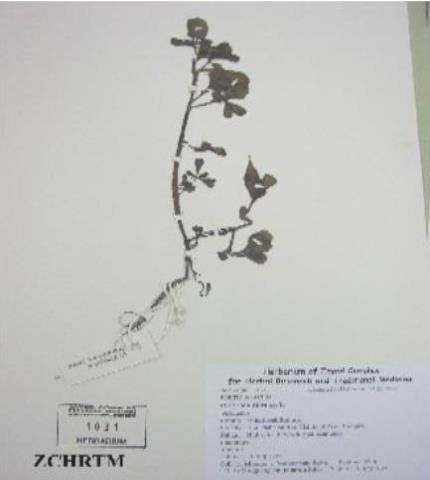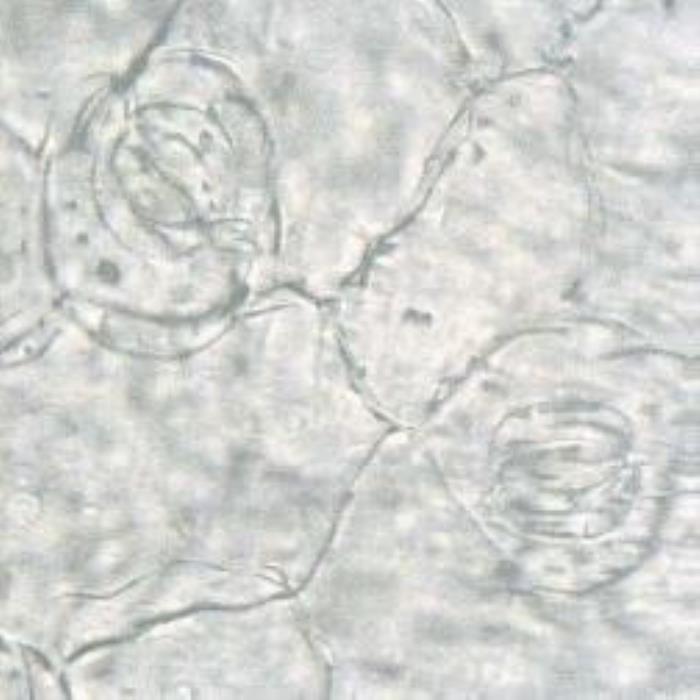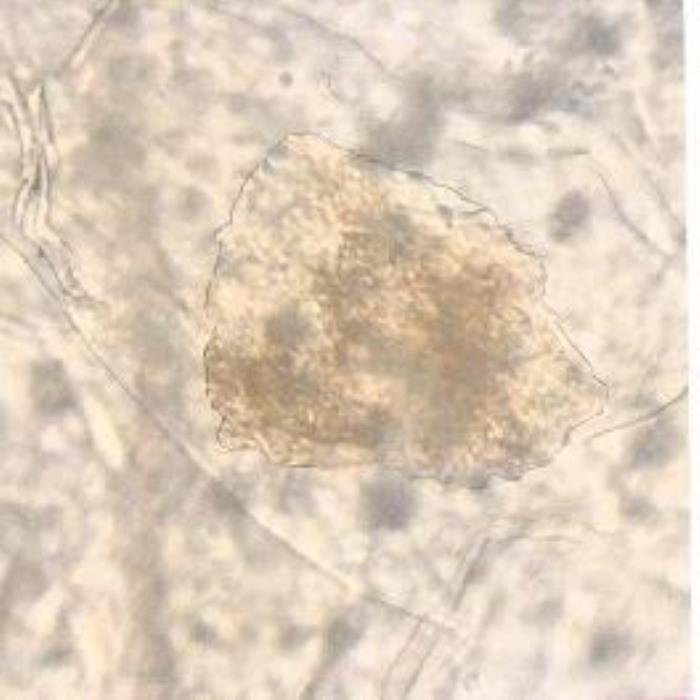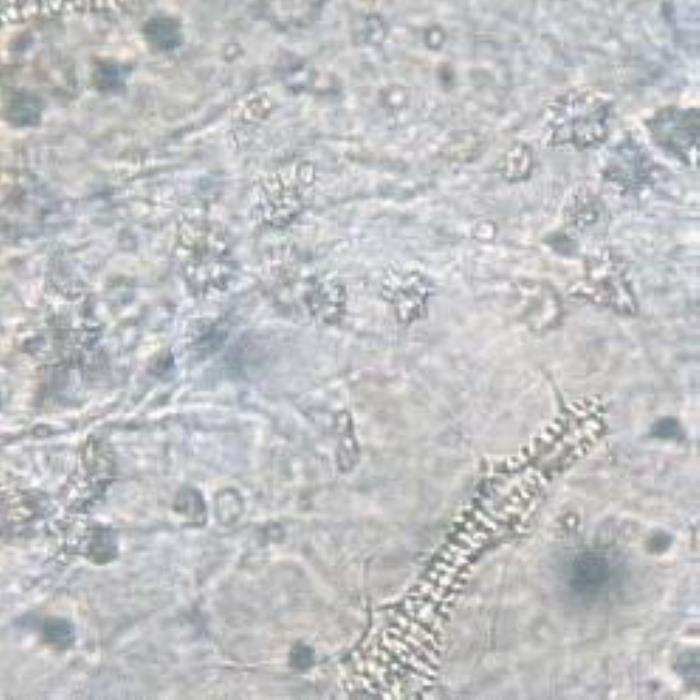
Portulaca oleracea /البربیر
Baq`lah, Riglah
Purslane, Common Purslane, Pupsley, Pourpier,Pussley
Barbeer, Feraeifro, Fargo, Riglah
Portulacaceae

Whole plant

Herbarium Sample
Ethnobotanical Characteristics
Description
Annual succulent, glabrous, prostrate or ascending plant, 10-40 cm high; very much branched from the base. Leaves alternate, fleshy, obovate or spathulate with a cuneate base and obtuse apex, smooth and waxy on upper surface, margins sometimes purple; sessile or indistinctly petiolate, 1-2(4)cm long,0.5-1(1.5) wide . Flowers solitary or clustered , axillary or terminal, surrounded by 2 glabrous bracts; 2 unequal sepals, 5 glabrous yellow petals, stamens 6-15. Fruit brown rounded capsule, 6-8(10) mm long, opening at top with lid . Seeds numerous , small, 0.8 mm broad, reniform and black in color.
Habitat & Distribution
Worldwide weed of unknown origin .Widespread in tropical and subtropical regions of the world found native in catchments areas or as weed of cultivation, but it is widely cultivated in many countries. In UAE found in valleys, farms, roadsides, water canals and sabkhas.
Part(s) Used
Leaves, Seeds and whole plant.
Traditional & Medicinal Uses
Plant edible fresh as salad or cooked; well known to most nations and its medicinal uses were mentioned in literature. The plant is diuretic, antiscorbutic, antispasmodic, vermifuge, refrigerant, antiseptic, emmengogue, aperient, vulnerary , anthelmintic and nervine. It is used for gastric and stomach problems; mouth, eye and hair wash; good for treatment of diarrhea, skin diseases, headache, fever, toothache and mouth ulcers, sore nipples and diabetes.
Pharmacognosy and Phytochemistry
Part Studied
Leaves & Stem
Microscopical Description
Leaf: Transverse section of the lamina shows the cuticle with deep irregular striations specially on the upper (adaxial) surface. The epidermal cells are tubular to pear shaped. Some epidermal cells contain rosettes of calcium oxalate and also other crystalline structures. Some flakes of whitish mucilage are detected at the epidermal layers. The paracytic stomata are well distributed in both epidermises but they are more on the upper one. The mesophyll encloses almost one layer of palisade tissues underlying the upper epidermal that consists of short and broad parenchyma cells with thin wavy cell walls. They contain rosettes of calcium oxalate and some of them also contain whitish mucilage. The spongy mesophyll consists of few sub-spherical cell and they are rich in calcium oxalate rosettes; some spongy cells that are adjacent to the vascular bundles are pear-shaped. The vascular strands are intricate and they contain narrow spirally and scalariformly thickened vessels. The accompanying fibers are short and unlignified.
Stem: A transverse section of the stem is almost circular in outline. The epidermal cells are polygonal in shape and are surrounded externally by thick striated cuticle. The epidermis is underlined by 2-3 layers of collenchyma cells next to which occur isodiametric parenchymatous cells densely filled with starch grains including both simple and compound grains. Small particles including prisms together with colourless to whitish mucilage cells are detected. The vascular bundles are arranged in a ring form enclosing a large pith containing rosettes of calcium oxalate. The vessels are spirally and scalariformly thickened (DPS ZCHRTM unpublished results).

a) Lower epidermis

b) Mucilage patch

c) Spongy mesophyll
- a). Lower epidermis: A surface view showing large lower epidermal cells and two oval to rounded stomata of the paracytic type.
- (b). Mucilage patch in an epidermal cell of the leaf. The sample was treated with ruthenium red reagent.
- (c). Surface view of the leaf at the spongy mesophyll region showing different contained crystals with cluster crystals of calcium oxalate being the major ones; also shown are spirally thickened vessels. (Magnifications: all x 400).
Organoleptic characteristics
Appearance: Solid powder
Colour: Gray
Odour: Aromatic
Taste: Agreeable
Physicochemical constants
Loss in weight on drying at 105°c (%): 7.30
Solubilities (%)
Alcohol solubility: 3.60
Water solubility: 33.50
10% ethanolic extractive: 32.34
Ash values (%)
Total ash: 24.80
Water soluble ash: 9.00-11.00
Acid-insoluble ash: 1.40
Successive extractive (%)
Petroleum ether (60-80°c): 2.9-3.05
Chloroform: 0.90-1.50
Absolute alcohol: 6.50-9.10
Distilled water: Not done
pH values
pH of 1% solution: 6.58
pH of 10% solution: 6.11
The above results are under process of publication( DPS, ZCHRTM Unpub. Results).
Chemical constituents
Quercetin, kaempferol, kaempferol glycoside, oleracin, noradrenaline, α-tocopherol, β-carotene, ascorbic acid and Portulaca xanthin I, II and III, α-linolenic acid are present. Aglycone part of an isolated glycoside was confirmed (after hydrolysis) as kaempferol by the thin layer chromatography (co-chromatography with authentic sample) using benzene – pyridine - formic acid (36:9:5) as mobile phase. ( Kamil et.al 1998; Kamil et.al 2000; DPS, ZCHRTM Unpub. results).
Pharmacological and Toxicological studies
The Portulaca oleraceae juice and aqueous extracts showed the neuromuscular activities (Habtemariam et. al., 1993). An aqueous extract of the stems and leaves produced relaxant effect observed on the isolated rat diaphragm (Parry et. al., 1993). The aqueous extract produced skeletal muscle relaxation in rats following i.p. or oral administration, as assessed by the prolongation of pull-up time (Parry et. al., l987).
P. oleraceae has been reported as skeletal muscle relaxant from various researchers including from our own laboratory. The muscle relaxant property of P. oleraceae has been demonstrated using various pharmacological techniques.
It was observed that a 10% ethanolic extract of this plant showed a significant reduction in the locomotor activity in mice, antinociceptive activity in rats using Tail Flick Method, an increase in the onset time of pentylenetetrazole-induced convulsions in mice and muscle relaxant activity in vitro (rat hemidiaphragm) and in vivo (Grip strength) experiments (Radhakrishnan, et. al. 2001).
The extract showed significant anti-inflammatory and analgesic after intraperitoneal and topical but not oral administration when compared with the synthetic drug, Diclofenac sodium (Chan et .al., 2000).
An aqueous extract produced dose-dependent pressure responses and an increase in extra cellular calcium reversed the inhibitory effect of the extract on the rabbit atria (Parry et. al., 1988).
The pharmacological and toxicological studies carried out in ZCHRTM laboratory and the results in brief, on Portulaca sp. (10% ethanolic extract) are as follows:
The results presented without references showed unpublished data (UPD, ZCHRTM, DBMS):
|
ACTIVTY |
RESULTS |
|
Anti-inflammatory activity-Rat paw oedema (Portulaca oleracea Topical) |
Showed a significant anti-inflammatory activity (Zakaria et al., l998a; Zakaria et al., l998b). |
|
Anti-inflammatory activity-Rat paw oedema (Portulaca oleracea - aerial parts) |
Showed a significant anti-inflammatory activity (Zakaria et al., l998a; Zakaria et al., l998b). |
|
Anti-inflammatory activity-Rat paw oedema (Portulaca grandiflora - lowers) |
Showed a significant anti-inflammatory activity (Zakaria et al., l998a; Zakaria et al., l998b). |
|
Antinociceptive activity-Hot plate, oral |
Showed significant antinociceptive activity (Chan et al., 2000). |
|
Antinociceptive activity-Hot plate method, i.p. |
Showed significant antinociceptive activity (Chan et al., 2000). |
|
Antinociceptive activity-Tail flick method , oral |
Showed significant antinociceptive activity (Chan et al., 2000). |
|
Antinociceptive activity-Tail flick, i.p. |
Showed significant antinociceptive activity (Chan et al., 2000). |
|
Antinociceptive activity-Hot plate (Portulaca oleracea-sativa) |
Showed significant antinociceptive activity (Chan et al., 2000). |
|
Portulaca Antinociceptive activity-Tail Flick (Portulaca oleracea-sativa) |
Showed a significant antinociceptive activity (Chan et al., 2000). |
|
Antinociceptive activity-Hot plate (Portulaca oleracea, aerial parts) |
Showed a significant antinociceptive activity (Chan et al., 2000). |
|
Antinociceptive activity-Tail Flick (Portulaca oleracea, aerial parts) |
Showed a significant antinociceptive activity (Chan et al., 2000). |
|
Antinociceptive activity-Hot plat (Portulaca grandiflora-flowers) |
Showed a significant antinociceptive activity (Chan et al., 2000). |
|
Antinociceptive activity-Tail Flick (Portulaca grandiflora- Flowers) |
Showed a significant antinociceptive activity (Chan et al., 2000). |
|
Studies on gastric ulcers- Indomethacin induced |
Produced a significant protective activity ( Islam et. Al., l998). |
|
Studies on gastric ulcer- Phyneylbutazone induced |
Produced a significant protective activity( Islam et. Al., l998). |
|
Studies on gastric ulcers-NaOH induced |
Produced a significant protective activity ( Islam et. Al., l998). |
|
Studies on gastric ulcers- Ethanol induced |
Produced a significant protective activity ( Islam et. Al., l998). |
|
Studies on gastric ulcers-Cold stress |
Produced a significant protective activity ( Islam et. Al., l998). |
|
Studies on gastric ulcers-Gastric acidity |
Produced a significant protective activity ( Islam et. Al., l998). |
|
Diuretic activity-Urine output & electrolytes |
Did not show diuretic activity. |
|
Anti-hypertension anesthetic- Anesthetic rats |
Caused a transient increase in BP ( Radha et al., l998a). |
|
Locomotor activity |
Reduced locomotor activity. |
|
Sleeping time, p.o |
Fail to prolong the sleeping time ( Radha et al., l998b). |
|
Sleeping time, i.p. |
Prolonged pentobarbitone-induced sleeping time (Radha et al., l998b) |
|
Skeletal muscle relaxing activity- Grip strength method |
Extract showed muscle relaxant activity. |
|
Anti-epileptic activity |
Prolonged the onset time of PTZ-induced convulsions |
|
Gross behavioral studies-Tremor/Twitches |
No tremor observed (Islam et al., 2000). |
|
Gross behavioral studied - Writhing |
No writhing observed (Islam et al., 2000). |
|
Gross behavioral studies - Diarrhea, Urination |
No diarrhea seen(Islam et al., 2000). |
|
Mortality |
No death recorded (Islam et al., 2000). |
|
Motor co-ordination (String & Platform test) |
Motor co-ordination not affected (Islam et al., 2000). |
|
Acute toxicity studies |
No abnormal toxicity symptoms ( Islam et al., 2000). |
|
LD50 evaluation |
g/kg (Islam et al., 2000). |
|
Sub-acute toxicity studies |
Extract appears safe at the dose tested ( Islam et al., 2000). |
|
Sub-chronic toxicity studies |
Extract appears safe at the dose tested ( Islam et al., 2000). |
|
Haematological studies |
Change in some parameters (Islam et al., 2000). |
|
Effect on body weight |
No significant change (Islam et al., 2000). |
|
Effect on vital organ weight |
No significant change observed (Islam et al., 2000). |
|
Teratogenicity |
No teratogenic activity observe; No foeto toxicity and maternal toxicity observed (Islam et al., 2000). |
Summary of the results
The plant showed a significant anti-inflammatory, analgesic; antigastric; skeletal muscle relaxant activity; showed prolongation of onset time of convulsion; prolongation of barbiturate sleeping time on ip administration; No severe toxic effect was observed at the dose tested.
Antimicrobial activity
The anti-fungal activity of Portulaca oleracea extract has been reported.(Oh etal.2000).
References
- Alami, R.& Macksad, A. Medicinal Plants of Kuwait.Al-assriya Printing Press,Kuwait
- Andrews, F.W. The Flowering Plants of Anglo-Egyptian Sudan; (1950&1952) vol 1+II; Arbroath, Scotland.
- Chan K, Islam MW, Kamil M, Radhakrishnan R, Zakaria MN, Habibullah M, Attas A.The analgesic and anti-inflammatory effects of Portulaca oleracea L. subsp. Sativa (Haw.) Celak. J Ethnopharmacol. 2000 Dec; 73(3): 445-51.
- Chevallier ,A. The Encyclopedia of Medicinal Plants. (1996) Dorling Kindersley Limited, London. ISBN 0 7513 03143.
- Department of Biomedical Sciences, Zyed Complex for Herbal Research and Traditional Medicine, Unpublished results.
- Department of Pharmacognostic Sciences, Zyed Complex for Herbal Research and Traditional Medicine ( ZCHRTM ), unpublished results .
- El-Ghonemy, A. A. Encyclopedia of Medicinal Plants of the United Emirates. (1993) 1st Edition, University of UAE.
- Habtemariam S, Harvey AL, Waterman PG. (1993) The muscle relaxant properties of Portulaca oleracea are associated with high concentrations of potassium ions. J Ethnopharmacol. 40(3): 195-200.
- Islam, M.W., M.N.M. Zakaria, R. Radhakrishnan, M. Habibullah and K. Chan. Evaluation of analgesic activity of the aerial parts of Portulaca oleracea v. sativa and its comparison with other two related species. J Pharm Pharmacol. 1998, 50 (Suppl) :226
- Kamil M., Jayaraj AF, Ahmad F, Gunasekhan C, Samuel S, Habibullah M & Chan K. Chemical standardization of Portalaca oleracea Var. sativa . Journal of Pharmacy and Pharmacology,1998, (Suppl.): 259.
- Kamil M., Habibullah M & Chan K. A. Review on Portulaca species ,with special reference to Portulaca oleracea .,Australian Journal of Medical Herbalism .2000, 12, (2): 43-48
- Mandaville, J. P. Flora of Eastern Saudi Arabia. (1990) Kegan Paul International Ltd. England.
- Oh KB, Chang IM, Hwang KJ, Mar W. (2000) Detection of antifungal activity in Portulaca oleracea by a single-cell bioassay system. Phytother Res. 14(5): 329-32.
- Parry O, Marks JA, Okwuasaba FK. (1993) The skeletal muscle relaxant action of Portulaca oleracea: role of potassium ions. : J Ethnopharmacol. 40(3): 187-94.
- Parry O, Okwuasaba F, Ejike C. (1988) Effect of an aqueous extract of Portulaca oleracea leaves on smooth muscle and rat blood pressure. J Ethnopharmacol. 22(1): 33-44.
- Parry O, Okwuasaba FK, Ejike C. (1987) Skeletal muscle relaxant action of an aqueous extract of Portulaca oleracea in the rat. J Ethnopharmacol. 19(3): 247-53.
- Radhakrishnan R, Zakaria MN, Islam MW, Chen HB, Kamil M, Chan K, Al-Attas A. (2001) Neuropharmacological actions of Portulaca oleraceae L v. sativa (Hawk). J Ethnopharmacol. 76(2): 171-6.
- Radhakrishnan, R., M.N.M. Zakaria, M.W. Islam, A. Ismail, M. Habibullah and K. Chan. Neuropharmacological actions of Portulaca oleracea v. sativa. J Pharm Pharmacol. 1998, 50 (Suppl) :225
- Western, A. R.The Flora of United Arab Emirates, an introduction. (1986) Publication of the UAE University.
- Zakaria,MN.M, Islam MW, Radhakrishnan, R.Ismail,Habibullah (1998)evaluation of anti-inflammatory activity of Portulaca oleracea L. J. Pharm. Pharmacol., 50, Suppliment 227.
- كریم، فوزي .الأعشاب في دولة الإمارات العربیة المتحدة،( 1995 ) مطبعة جامعة الإمارات
- محمد العودات، جورج لحام النباتات الطبية و استعمالاتها،(1998) الجزء الأول.، الطبعة الثانية. الأهالي ، سورياا
